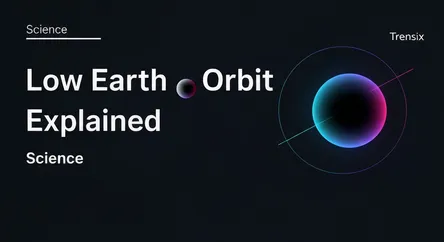Science
Low Earth Orbit Explained

Discover Low Earth Orbit (LEO), the orbital highway for satellites, the ISS, and services like Starlink. Learn why this space region is buzzing.
What is it?
Low Earth Orbit (LEO) is the region of space around Earth at an altitude between 160 to 2,000 kilometers. It is the most accessible part of space, making it a prime location for many activities. To stay in orbit, objects like the International Space Station (ISS) and thousands of satellites must travel at incredible speeds—approximately 7.8 kilometers per second. This high velocity allows them to constantly "fall" around the Earth, creating a stable orbital path. LEO's proximity to our planet is ideal for imaging satellites, as it allows for higher resolution, and for communication systems, as it reduces signal lag.
Why is it trending?
LEO is experiencing a modern-day gold rush. The trend is driven by a dramatic reduction in launch costs, pioneered by private companies like SpaceX. This has enabled the deployment of massive satellite "mega-constellations." Projects like SpaceX's Starlink and Amazon's Project Kuiper are launching thousands of small satellites into LEO to provide high-speed, low-latency internet access to underserved and remote areas globally. This commercial boom has turned LEO into a bustling hub of technological and economic activity.
How does it affect people?
The increasing use of LEO directly impacts daily life. It's the backbone for services that provide global internet connectivity, enhancing communication and education worldwide. Earth observation satellites in LEO monitor climate change, track weather patterns, and aid in disaster response. GPS and other navigation systems also rely on these orbits. However, this growth also raises concerns about orbital congestion and space debris, which could threaten future space missions and the sustainability of the LEO environment.